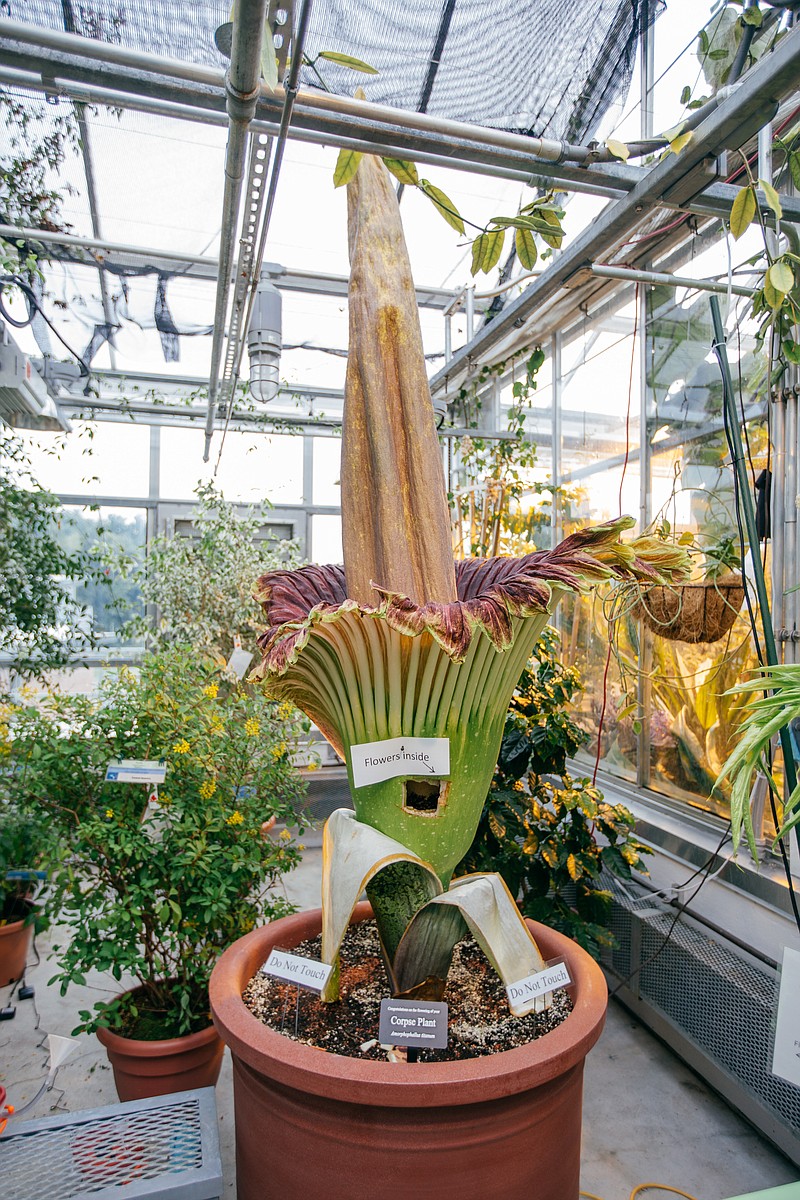KNOXVILLE, Tenn. (AP) -- The public is invited to come see, and smell, the rare blooming of a corpse flower at the University of Tennessee Knoxville's Hesler Biology Building.
The school has had the plant, nicknamed Rotty Top, for more than two decades, but this will be the first time it has bloomed, Jeff Martin, manager of UT's Ecology and Evolutionary Biology Greenhouses, told the Knoxville News Sentinel. It is expected to bloom within the next week.
The plant's scientific name is Amorphophallus titanum (literally "misshapen giant phallus"), but it's also called the titan arum or, more commonly, the corpse flower. Over the past several days, the plant's fleshy spike has been shooting out of the dirt, growing 1 to 3 inches taller each day. When it blooms, the outer covering will open to reveal a maroon interior, and then the plant will start to reek.
"Oh, it's going to be bad," said Martin, who has never smelled one. "A lady I was talking to yesterday said that when she saw one somewhere in Wisconsin, she could smell it in the next building over. It may not be that bad, but I'm pretty sure it's going to be the whole floor. It's going to get stinky."
When the titan arum blooms, it gives off an odor often compared to the smell of rotting flesh to attract flies and other pollinators. At the same time, it uses stored energy from its underground stem to generate heat that helps the stench spread.
Randy Small, director of biology teaching and learning at UT, was headed out of town for a vacation when his colleagues asked if they could set up the plant in his office. Now he's back.
"I didn't think about the whole odor issue until just recently," he said.
